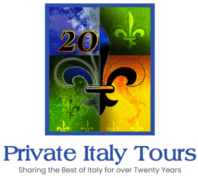
Bottecelli Annunciation
My first encounter with Botticelli’s breathtaking Annunciation at the Uffizi Gallery was many years ago. Crowds strangled any reasonable view of either the Primavera or the Birth of Venus, so I turned my attention to works along the ‘side walls’ of Gallery 10.
What a marvel. Translucent wings curve along the back of an angel. A long and transparent flowing robe trails beneath the wings, adding an even deeper sense of the apparition’s unworldly arrival. Mary’s demure gaze, the curve of her body away from the angel and the position of her hands seem to communicate, all at the same moment, a sense of disbelief, hesitation and acceptance: all marks of the one of the most incredible artists of the Renaissance.
The work was completed, most experts agree, in 1490. It was in that same year that a Dominican monk from Ferrara, one Girolamo Savonarola, arrived in Florence. A rabid and vocal opponent to Medici power and a strident interpreter of scripture, he roused the population against the government. His fiery sermons inspired the majority of the city’s citizens to turn away from any form of vanity or self indulgence. Botticelli fell under the monk’s spell. While the Annunciation portrays a devout and holy scene, the work that Botticelli produced after the monk’s death in 1498 reflect a far more intensely religious character.
In the background of the Annunciation are scenes of the artist’s time: a walled hilltop village, an arched bridge across a river with yet another walled city, towers to the right. The space through the window adds remarkable dimension (See my Massaccio’s Trinity post) to Botticelli’s vision.
As I study this painting now, another thought occurs to me.
 Nearly six-hundred miles to the south of Florence, in the southeast mountains of Sicily, is a valley that is lined with caves. Some of these caves date to pre-historic times.
Nearly six-hundred miles to the south of Florence, in the southeast mountains of Sicily, is a valley that is lined with caves. Some of these caves date to pre-historic times.
On a recent visit, I walked this valley (Valle di Ispica) and discovered that, in many of the caves, there are remains of early Christian frescoes. Along the ceilings and some of the walls is evidence that these caves were used as places of worship, safe protection against Roman rule during the centuries prior to Christianity’s formal recognition.
As I consider Mary in the Botticelli piece, my thoughts turn to a cave where, perhaps, “her” angel arrived. A threadbare and hungry Mary, startled by the implications of the angel’s message, might well have retreated to a fire warmed cave where she gave even deeper consideration to the message received.
Botticelli’s romanticized vision certainly fit the expectations of his era, yet I ponder what Mary’s circumstances might have truly been.
So it is that caves on Sicily inspire a more austere interpretation of where and how a certain angel might have spoken to the chosen woman.
All of Botticelli’s works still astound me, yet the Annunciation remains above them all. I recall transparent wings, Mary’s encounter all those centuries ago and fresco fragments in ancient caves.
IF YOU GO:
Uffizi admission is far better is you reserve a specific entry time for the museum, and get your tickets paid and issued in advance. Public admission lines are often two to three hours long.
Here is the link for reserving and purchasing your tickets:
Uffizi Tickets
You must be at the entrance door for pre-reserved tickets within fifteen (15) minutes of your reserved time. If you miss that time window, you may find it very difficult to gain admission.
Also, be aware that once you go through security at the museum, there are three very long and steep flights of stairs you must climb before you arrive on the main gallery level of the museum. There are elevators inside the secure area of the museum. If needed, you can request their use.
Below is an excellent map. You arrive on the gallery level using the stairs indicated near Gallery’s 3 & 4. The oddly shaped chamber between the stairwell and the gallery hall is occupied by guards. Botticelli’s works are in Galleries 10 – 14.

